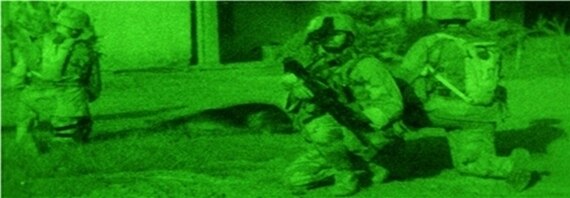The low cost of digital imaging devices has allowed them to become popular consumer products. This low cost is made possible by leveraging a mature processing infrastructure and the ability to fabricate complete focal plane arrays (FPAs) at the wafer scale. A similar trend is occurring on a smaller scale with thermal imaging technologies. Microbolometers that are sensitive in the long wave infrared (LWIR) spectrum and are used as a detector in a thermal camera are also manufactured at the wafer scale, and the resulting cost reduction is enabling thermal imagers at consumer‐grade price points. In contrast, FPAs that respond in the short‐wave and mid‐wave infrared (SWIR and MWIR) spectral bands are currently manufactured using complex and time‐consuming methods that typically involve several manual fabrication steps, including single‐die processes. Further contributing to high cost is the requirement that MWIR FPAs operate at temperatures < 200 degrees K to achieve good signal‐to‐noise ratios, which requires the use of a cryogenic cooler.
Through its Wafer Scale Infrared Detectors (WIRED) program, the U.S. Defense Advanced Research Projects Agency (DARPA) is asking industry to develop infrared sensors and cameras for low-cost, large-format, and high-performance imaging in the SWIR, MWIR and long-wave infrared (LWIR) spectral bands. They are doing so via a broad-agency announcement, designated DARPA-BAA-15-57.
Specifically of interest are infrared detector materials that can be monolithically processed on traditional readout integrated circuit (ROIC) substrates at the wafer scale. To minimize cost, size, weight and power (SWaP), MWIR FPA detectors must be able to operate at temperatures above 230 degrees K.
DARPA anticipates that through use of current state-of-the-art technology substantial reductions in pixel pitch should be achieved for the same imager format. The program also seeks a better understanding of the fundamental properties, limitations, and benefits of wafer‐scale detector technology. Finally, WIRED seeks to develop innovative detector technologies in the LWIR spectral band that will enable FPAs to operate without cooling.
Proposals should have as a goal demonstrating prototype SWIR, MWIR, and LWIR cameras that can be field tested. The DARPA WIRED program is estimated to be worth as much as $40 million, with several contract awards expected. Interested organizations should submit abstracts no later than Oct. 9, 2015, and full proposals no later than Nov. 23, 2015 to the DARPA BAA website.

